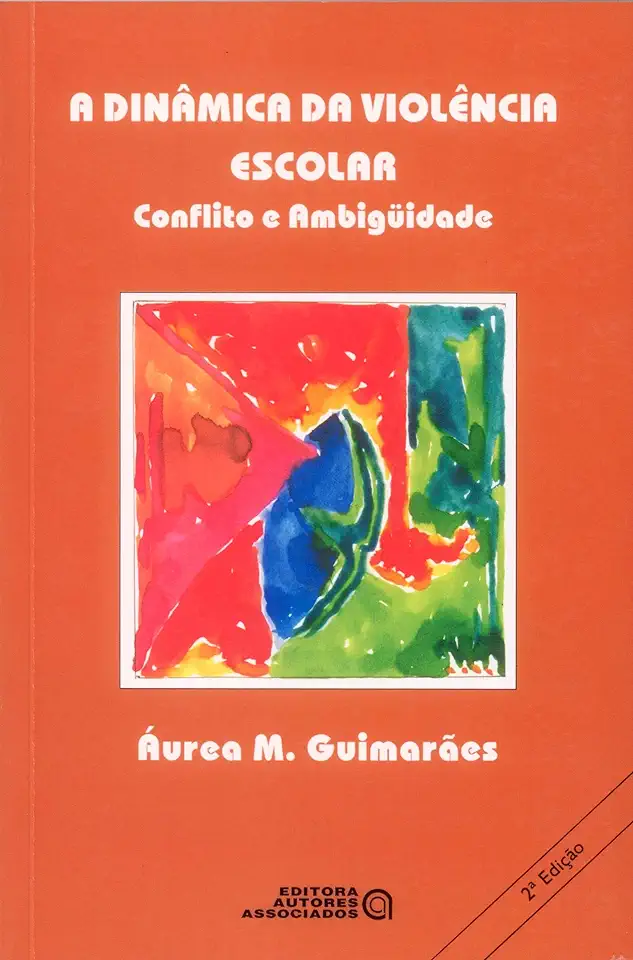
The Dynamics of School Violence - Conflict and Ambiguity - Áurea M. Guimarães
The Dynamics of School Violence: Conflict and Ambiguity
By Áurea M. Guimarães
A Comprehensive Exploration of School Violence
In her groundbreaking book, "The Dynamics of School Violence: Conflict and Ambiguity," Áurea M. Guimarães delves into the complex and multifaceted issue of school violence, offering a comprehensive analysis of its causes, consequences, and potential solutions. With meticulous research and compelling insights, Guimarães sheds light on this pressing social problem, providing educators, policymakers, and parents with the knowledge and tools to effectively address and prevent school violence.
Understanding the Roots of School Violence
Guimarães begins by examining the underlying factors that contribute to school violence, moving beyond simplistic explanations and exploring the interplay of individual, social, and environmental influences. She argues that school violence is not merely a product of individual pathology or moral failure, but rather a consequence of broader societal issues such as poverty, inequality, and social exclusion. By unraveling the complex web of causes, Guimarães lays the foundation for developing effective prevention strategies that target the root causes of violence.
The Role of Conflict and Ambiguity
Central to Guimarães' analysis is the concept of conflict and ambiguity. She contends that schools are inherently conflictual environments, where diverse interests, values, and expectations collide. When these conflicts are not effectively managed or resolved, they can escalate into violence. Moreover, Guimarães highlights the role of ambiguity in school settings, where unclear rules, expectations, and boundaries can create fertile ground for misunderstandings and conflicts. By shedding light on these dynamics, Guimarães provides a framework for understanding and addressing the underlying tensions that contribute to school violence.
The Impact of School Violence
Guimarães goes beyond the immediate incidents of violence to explore the far-reaching consequences for individuals, schools, and communities. She examines the psychological, emotional, and physical toll that school violence takes on students, teachers, and administrators, highlighting the disruption of learning environments and the erosion of trust and safety. Furthermore, Guimarães emphasizes the broader social and economic costs of school violence, including increased healthcare expenses, decreased productivity, and diminished community cohesion.
Promising Prevention and Intervention Strategies
Armed with a deep understanding of the causes and consequences of school violence, Guimarães offers a wealth of practical and evidence-based prevention and intervention strategies. She draws on successful programs and initiatives from around the world, showcasing effective approaches to conflict resolution, peer mediation, restorative justice, and social-emotional learning. Guimarães emphasizes the importance of a comprehensive approach that involves collaboration among schools, families, and communities, as well as the need for long-term commitment and support.
A Call to Action
"The Dynamics of School Violence" serves as a clarion call to action, urging educators, policymakers, and parents to confront the issue of school violence head-on. Guimarães provides a roadmap for creating safer and more inclusive learning environments, where conflicts are constructively resolved, and students can thrive. By combining rigorous research, insightful analysis, and practical recommendations, this book is an essential resource for anyone committed to preventing and addressing school violence.
Conclusion
"The Dynamics of School Violence" is a must-read for anyone concerned about the safety and well-being of our children and communities. Áurea M. Guimarães' groundbreaking work provides a comprehensive understanding of the causes, consequences, and potential solutions to school violence, empowering readers with the knowledge and tools to make a positive impact. By investing in prevention and intervention strategies, we can create schools that are safe, supportive, and conducive to learning, ensuring a brighter future for our children and society as a whole.